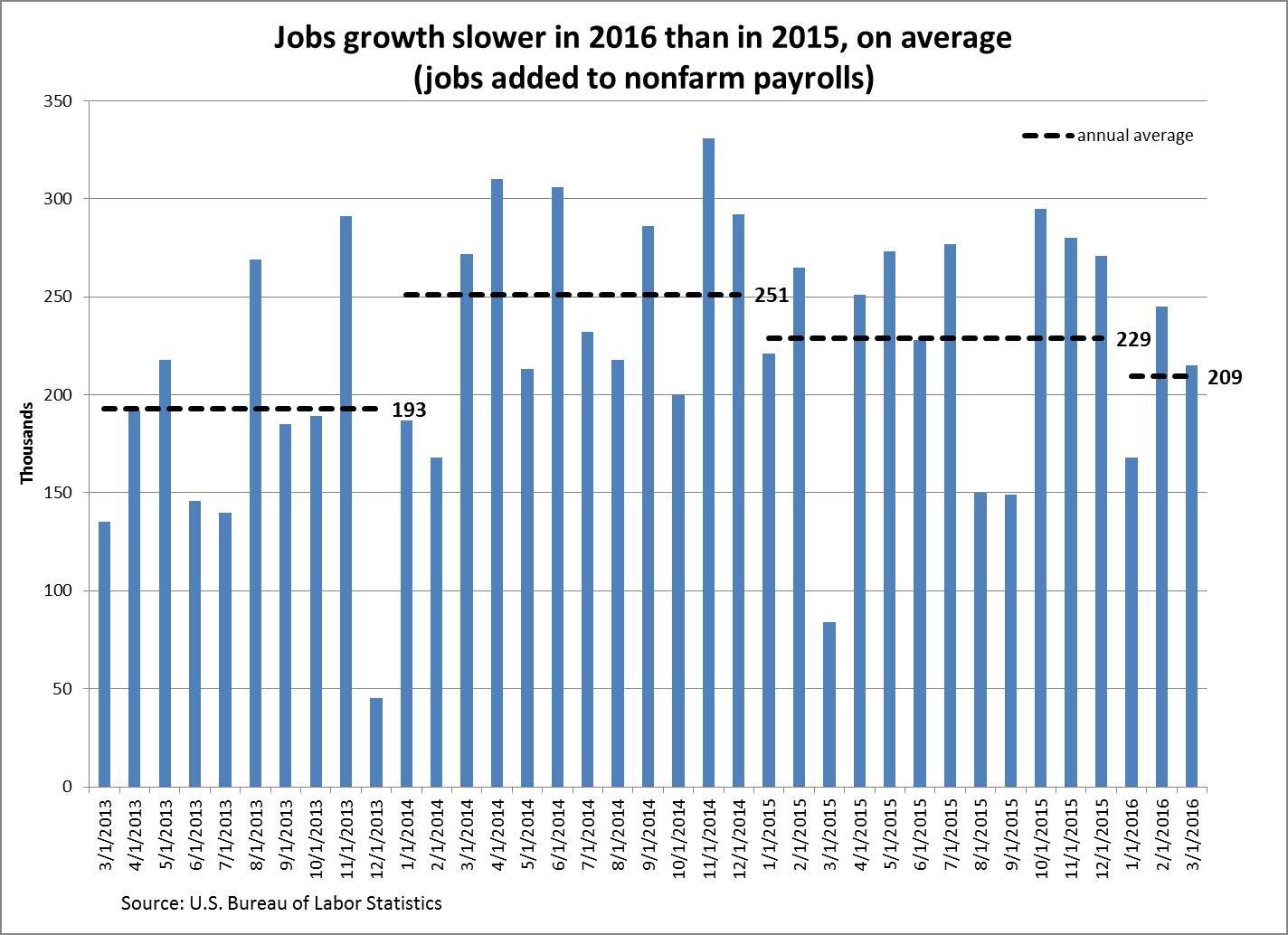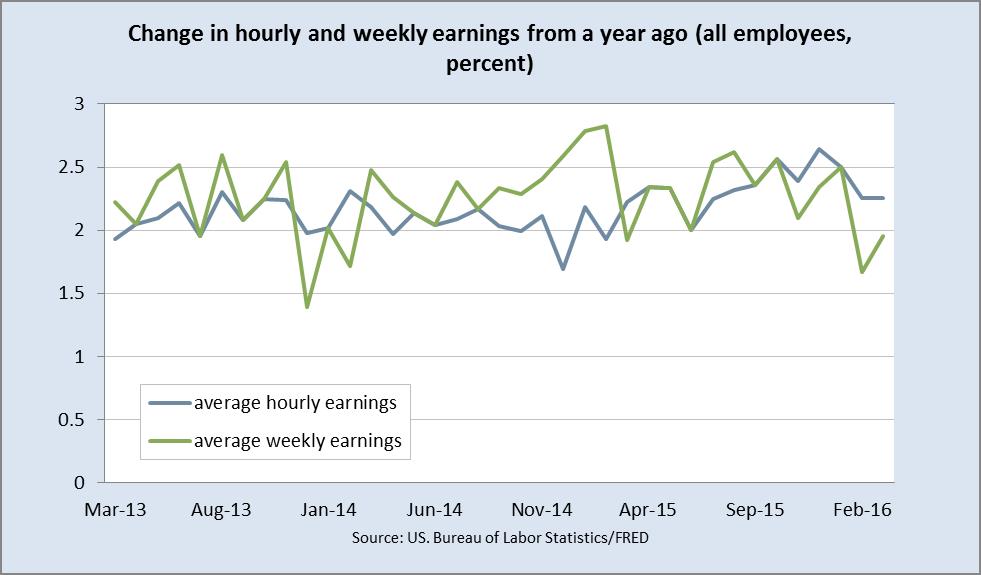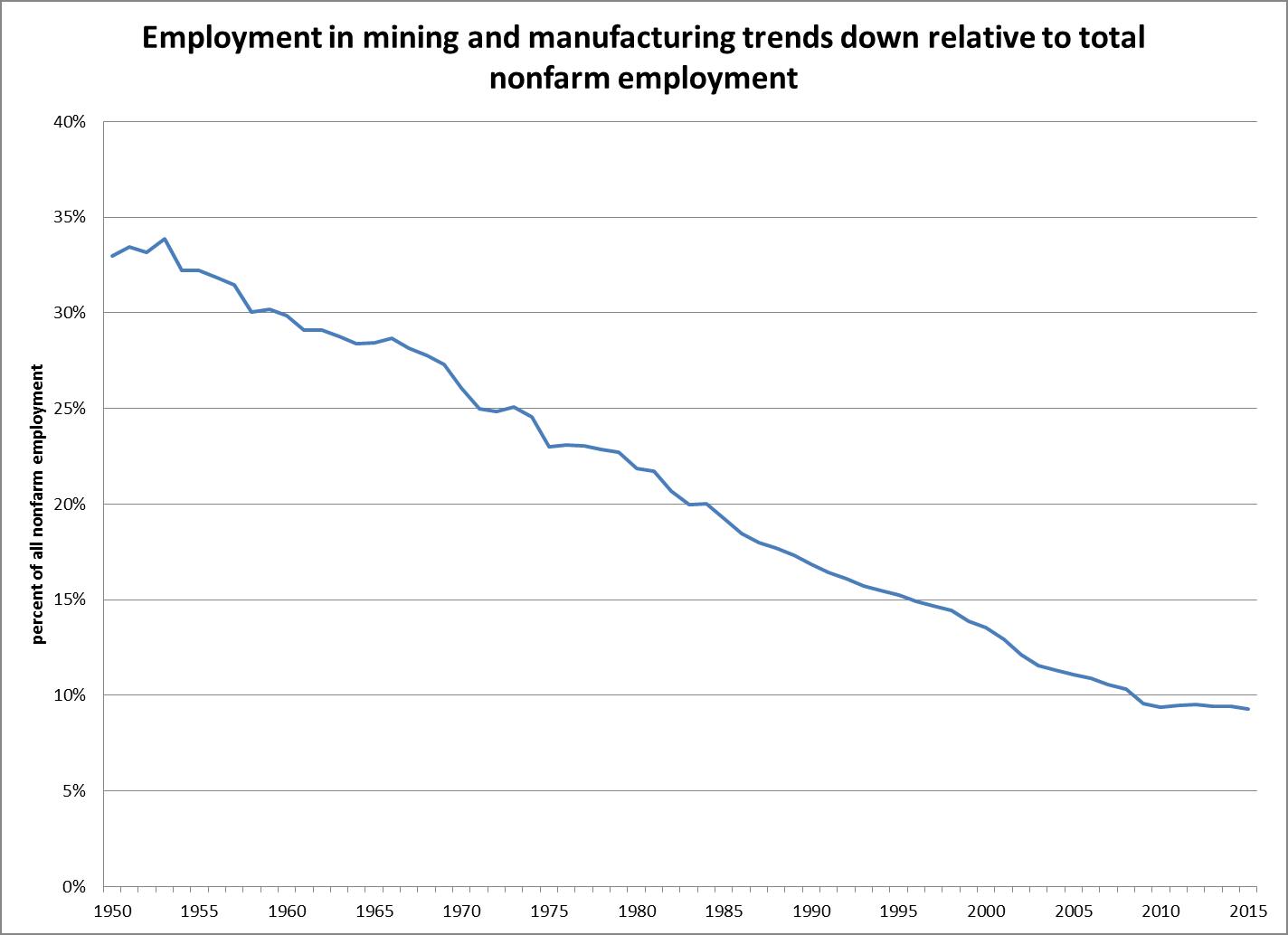Jobs Growth Continues, But Uneven Among Industries
The U.S. economy added jobs in March and more people are joining the labor force. Employee earnings continue growing at a decent pace, which bodes well for incomes. However, goods producing industries lost jobs for the second month in a row, a continued area of concern.
The U.S. economy added 215,000 jobs in March, according to the latest report from the Bureau of Labor Statistics released this morning. This is a solid pace of jobs growth, although a bit slower than the average seen in 2015. Since the start of 2016, on average the economy added 209,000 jobs per month, slower than over the same period last year. (See Chart 1.)
The unemployment rate rose slightly to 5 percent in March from 4.9 percent in February, but this actually is a good sign because the increase was driven primarily by more people entering the labor force. Both the labor force participation rate and the employment-to-population ratio increased in March, suggesting that people are returning to the labor force because they see improved prospects of finding a job – and most of them do find jobs. The median duration of unemployment, however, has been slowly rising since the start of the year, implying that people who have been unemployed for a short period of time (including those who recently entered the labor force) find jobs more easily than the longer-term unemployed.
The report also shows solid growth in weekly and hourly employee earnings. In March, the average hourly earnings were 2.3 percent higher, and the average weekly earnings 2 percent higher, than a year ago. (See Chart 2.) This is robust growth in hourly earnings compared to recent years, and if it continues, it should support the growth of personal income.
Chart 2
Most of the 215,000 jobs added in March were in the private sector (195,000). However, the jobs growth was not uniform across industries. Among the goods producing industries, only construction added jobs (+37,000), while manufacturing (-29,000) and mining & logging (-12,000) lost jobs. The service providing industries added jobs, with the largest increase in retail trade (+47,700), leisure and hospitality (+40,000), and health care (+36,800). Even the government added 20,000 jobs (most of them with local governments), the fastest growth since the summer of 2015.
While the loss of jobs in manufacturing and mining in the past two months is a cause for concern, these sectors are no longer as important for the U.S. economy as they were in decades past. In 2015, mining and manufacturing together employed only slightly more than 9 percent of all nonfarm workers, far less than the 30 percent seen in the 1950’s, or the 20 percent in the 1980s (see Chart 3). Through the end of the 1980’s, manufacturing was the single largest sector by employment in the United States. Today the manufacturing and mining sectors combined employ fewer workers than sectors such as retail trade, health care, professional and business services, or leisure and hospitality.
Therefore, unless the job losses in manufacturing and mining get much worse or spread to other industries, they are not likely to lead to aggregate job losses for the economy.
Chart 3:











